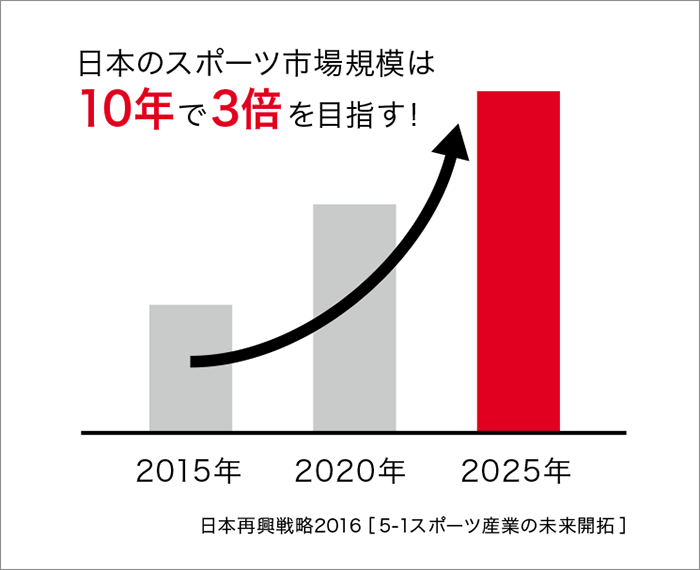The "Golden Sports Years" (GSYs) will see a succession of international sporting events held in Japan. These three years are expected to bring evolution across various fields, extending far beyond the realm of sports itself. Professor Yoshiyuki Mano of Waseda University's Graduate School of Sport Sciences explains the ripple effects these events will generate.
Golden Sports Years in Detail: The Data
Period ▶ September 20 - November 2
Days ▶ 44 days
Participating Countries/Regions and Number of Athletes ▶ 20 countries/regions (48 events), 1,000 athletes
Venues ▶ 12 cities nationwide
Attendance ▶ 2.2 million
Economic Impact ▶ ¥437.2 billion
Event Keywords ▶
● The world's third-largest sporting event
● Long event period and nationwide hosting allow for overseas fans touring Japan
● High proportion of affluent attendees from Europe, America, and Australia

Period ▶ July 24–August 9 (Olympics) / August 25–September 6 (Paralympics)
Duration ▶ Total 30 days
Participating Countries/Regions and Athletes ▶ 204 countries/regions, 15,000 athletes
Venues ▶ Kanto, Chubu, Tohoku, Hokkaido regions centered on Tokyo
Number of Visitors ▶ 10 million
Economic Impact ▶ ¥20 trillion
Key Event Terms ▶
● The world's second-largest sporting event
● Involves numerous countries and regions, significant for diplomacy
● Opportunity to promote diversity and inclusion
Period ▶ May 14–May 30
Days ▶ 17 days
Participating Countries/Regions and Athletes ▶ 150 countries, 50,000 athletes
Venue ▶ Kansai region
Visitor Count ▶ 200,000
Economic Impact ▶ ¥146.1 billion
Event Keywords ▶
● Open to anyone aged 30 and over. The world's largest festival of participatory sports
● Includes rugby and Olympic events, presenting an opportunity to boost participation rates following the 2019 and 2020 impact
※Table figures and data based on Mr. Mano's publications
Bringing Japan's "Second Opening"
Why does consecutive hosting create benefits?
Major sporting events generate effects across various domains. However, a single tournament risks producing only temporary, localized impacts. By hosting three consecutive events, we create temporal and spatial breadth in these effects. This is a major advantage of GSYs. Furthermore, the deadline effect is significant. Having a clear deadline—the event date—makes it easier to achieve substantial change within a set period. Indeed, consecutive hosting within the same country, as seen here, may become the norm going forward.
So, what areas will GSYs leave a legacy in? I'll discuss the details next time, but beyond the obvious boom in inbound tourism, it will essentially mark a "second opening." Against the backdrop of population decline, Japan will advance its internationalization and diversification. The number of foreign workers will likely increase. Many regional areas are lagging in their preparations. Within this context, these three years present an opportunity to heighten residents' international awareness and advance to the next stage. By leveraging the deadline effect, we can lay the groundwork for internationalization over these three years. I see this as an excellent opportunity for that purpose.
Is sports really that amazing?
Its unceasing evolution and potential
Sports continue to be expected to grow as an industry. Japan, in particular, has government projections estimating the sports industry could expand by approximately 10 trillion yen (※), indicating significant room for growth. The nature of stadiums is also changing; overseas, multifunctional complexes incorporating movie theaters and libraries are emerging.
The evolution of sports themselves is also remarkable. Currently, a global trend is the downsizing and street-based adaptation of sports. The former is exemplified by 3x3 basketball and futsal, while the latter sees skateboarding and parkour—gymnastic movements performed in urban spaces—gaining popularity. Furthermore, the popularity of e-sports is phenomenal. The history of sports continues to evolve, which itself speaks to the potential of this field.
※In its 2016 "Japan Revitalization Strategy," the government set a target to expand the sports industry from 5.5 trillion yen in 2015 to 15 trillion yen by 2025.






